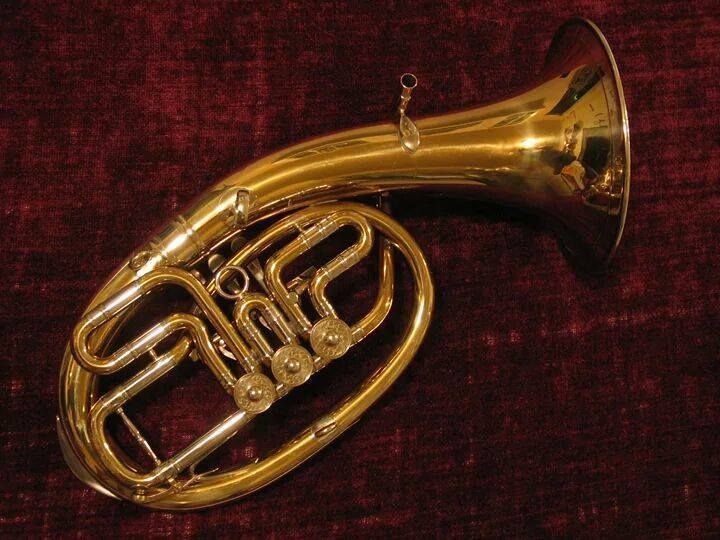Hi --
After thinking about it for a long time, I bought a "Wagner tuba" recently. (Aside: a Wagner tuba is a Baritone/Euph that is distinctively oval-shaped, with a lot of flare (in both senses) with an easy sound that has a lot of French Horn feeling to it.) It's a Cerveny, about 30 years old, coming to me from a small village in France.
Anyhow, I played an Octoberfest gig with it yesterday and it was excellent -- except that one of the (rotary) valves doesn't work reliably, and one doesn't work at all. I have cleaned it to within an inch of its life, except that I have not taken apart the valve-stem area, or taken off the upper caps.. I have attempted to take it to our local repair person/people, but for a valve tune-up he requires leaving it in his possession until mid-November. And, even without the wait, he/they are unpleasant to do business with. So I'm on my own.
I noticed an interesting symptom yesterday: when I hold the horn so the valves point straight up, they all work quite well. When I hold it so that they point straight down, the two valves in question work not at all. In playing position, they work "sometimes".
What does it mean?
thanks.
Garry
PS - I have researched the internet, but everybody so far says "take it to your local repair person."
After thinking about it for a long time, I bought a "Wagner tuba" recently. (Aside: a Wagner tuba is a Baritone/Euph that is distinctively oval-shaped, with a lot of flare (in both senses) with an easy sound that has a lot of French Horn feeling to it.) It's a Cerveny, about 30 years old, coming to me from a small village in France.
Anyhow, I played an Octoberfest gig with it yesterday and it was excellent -- except that one of the (rotary) valves doesn't work reliably, and one doesn't work at all. I have cleaned it to within an inch of its life, except that I have not taken apart the valve-stem area, or taken off the upper caps.. I have attempted to take it to our local repair person/people, but for a valve tune-up he requires leaving it in his possession until mid-November. And, even without the wait, he/they are unpleasant to do business with. So I'm on my own.
I noticed an interesting symptom yesterday: when I hold the horn so the valves point straight up, they all work quite well. When I hold it so that they point straight down, the two valves in question work not at all. In playing position, they work "sometimes".
What does it mean?
thanks.
Garry
PS - I have researched the internet, but everybody so far says "take it to your local repair person."
 ).
). ).
).

Comment